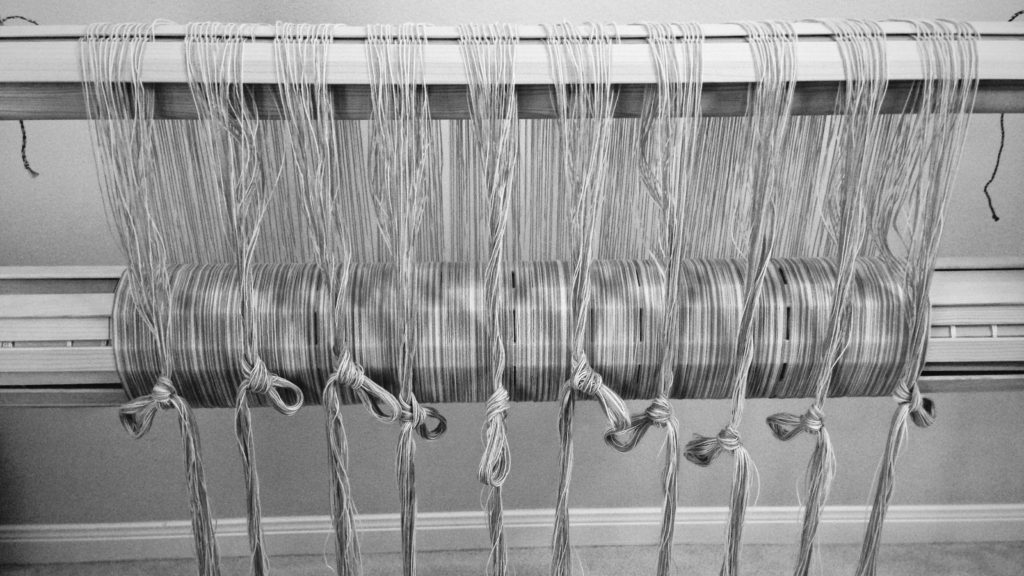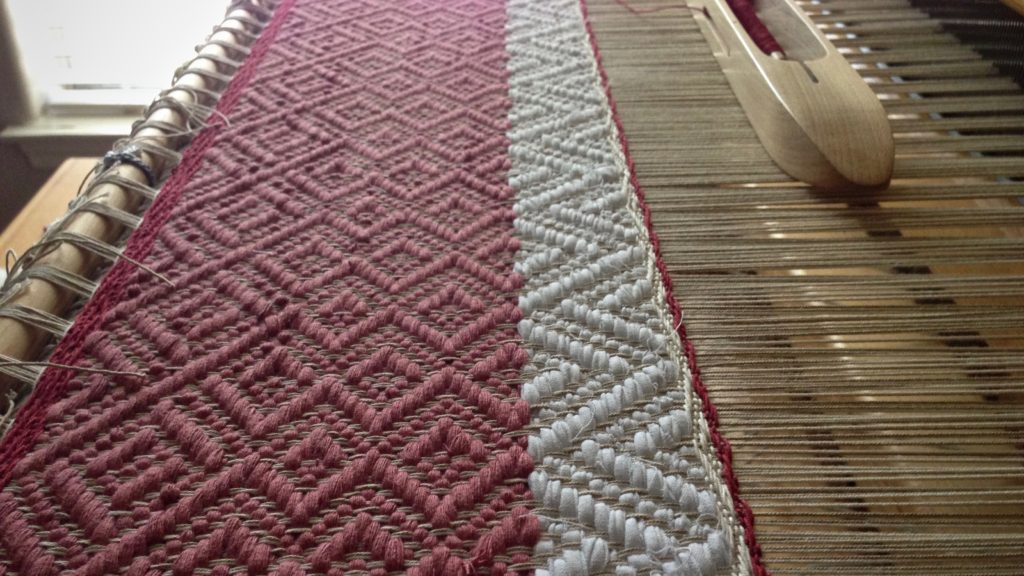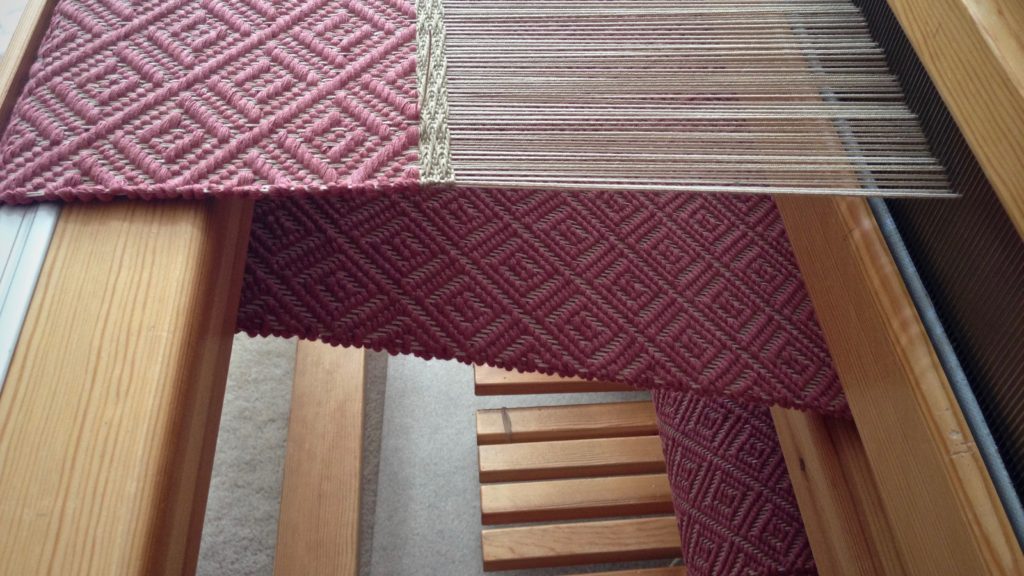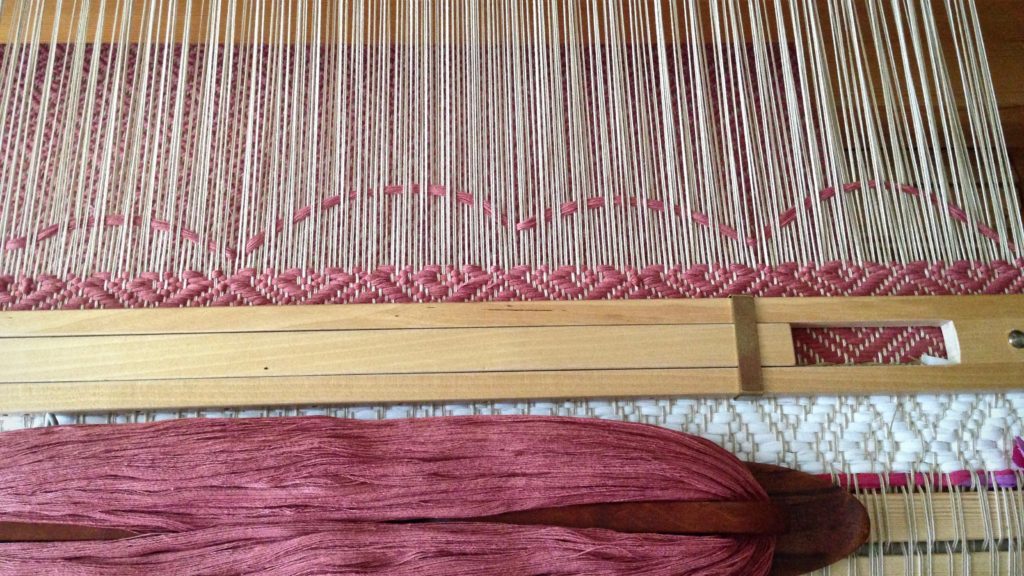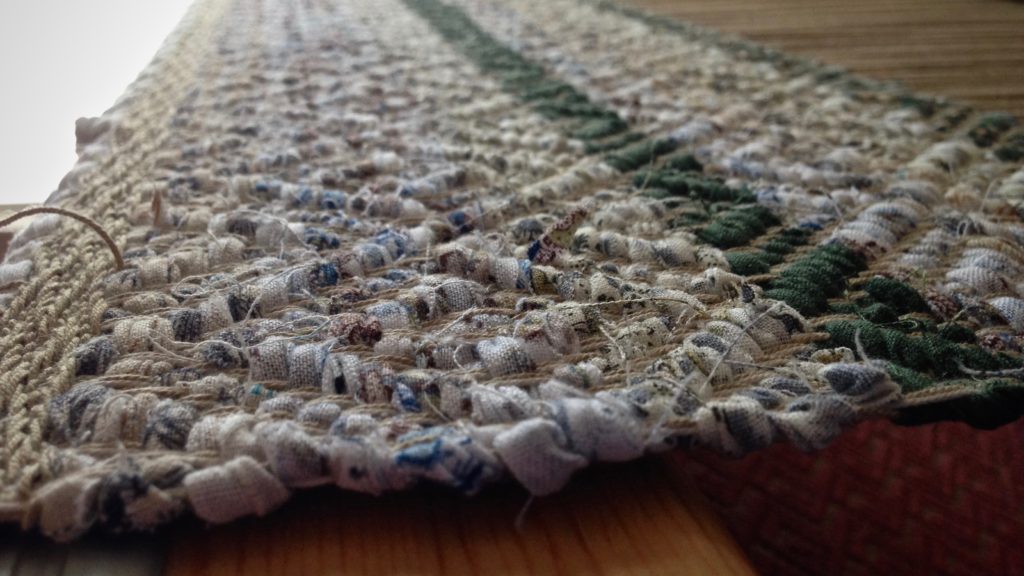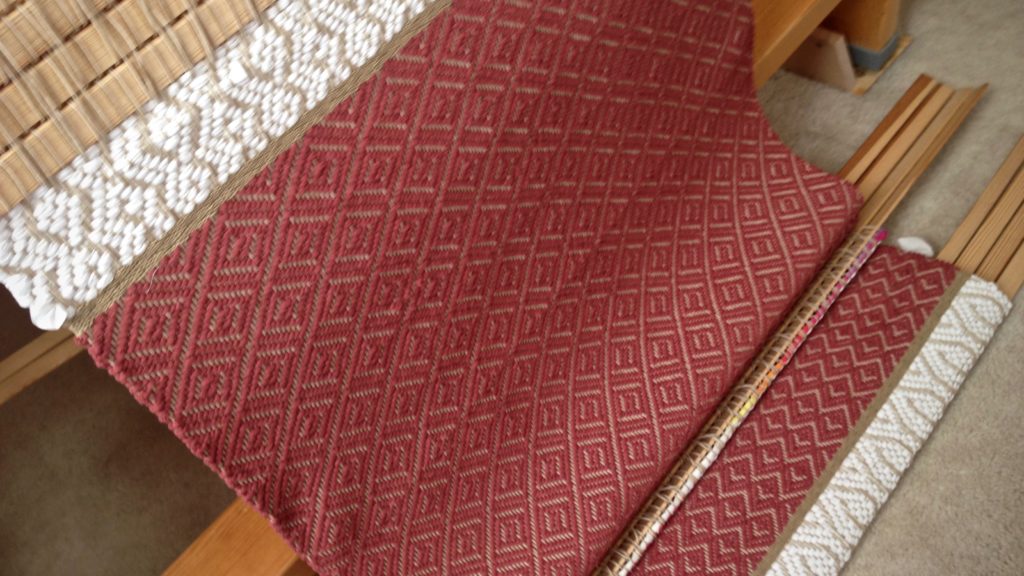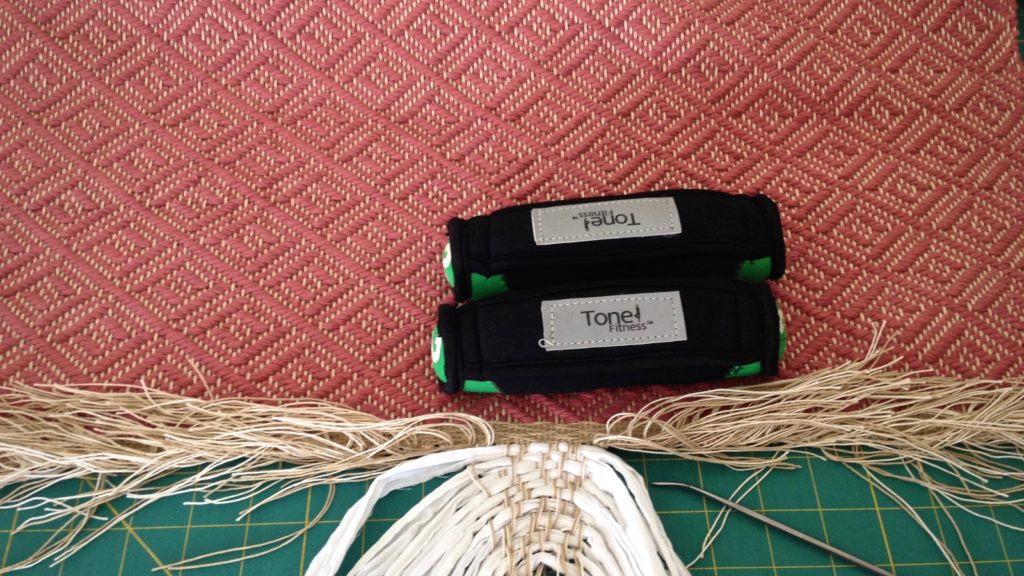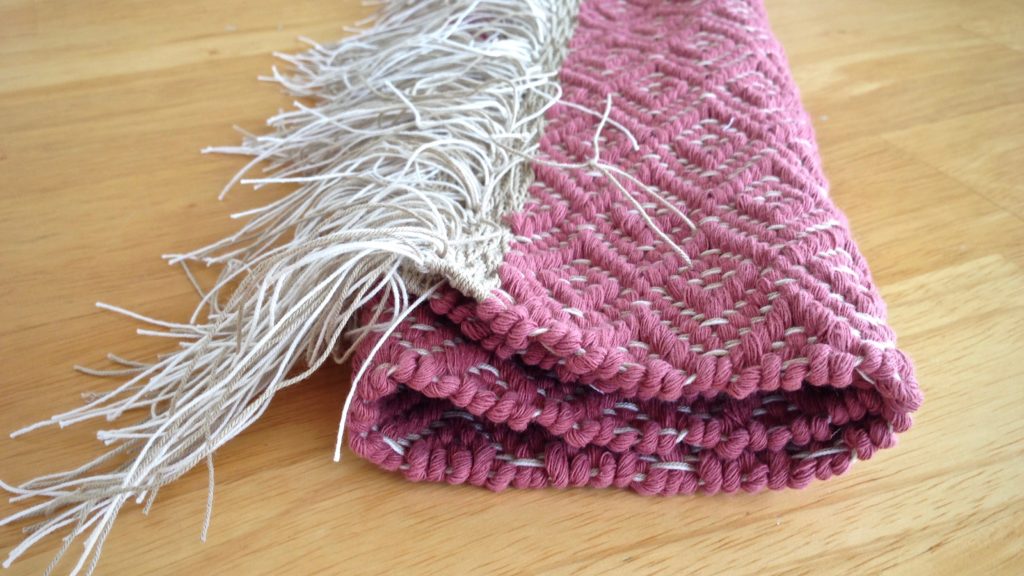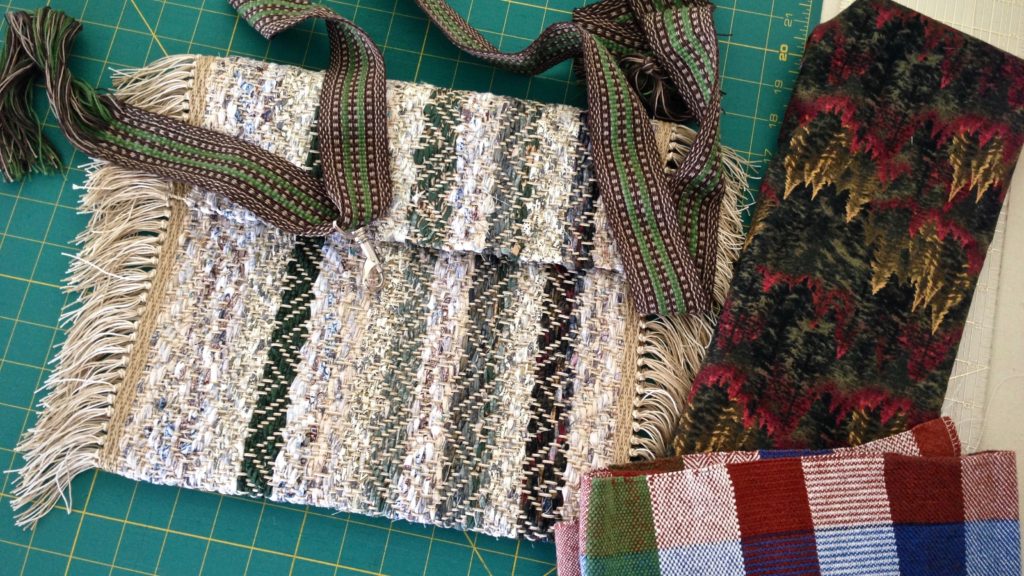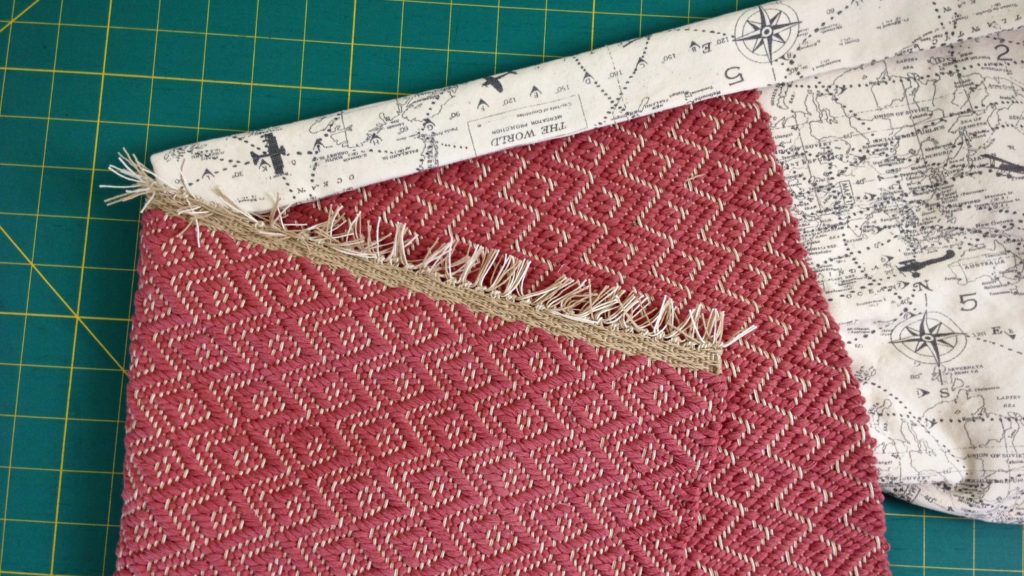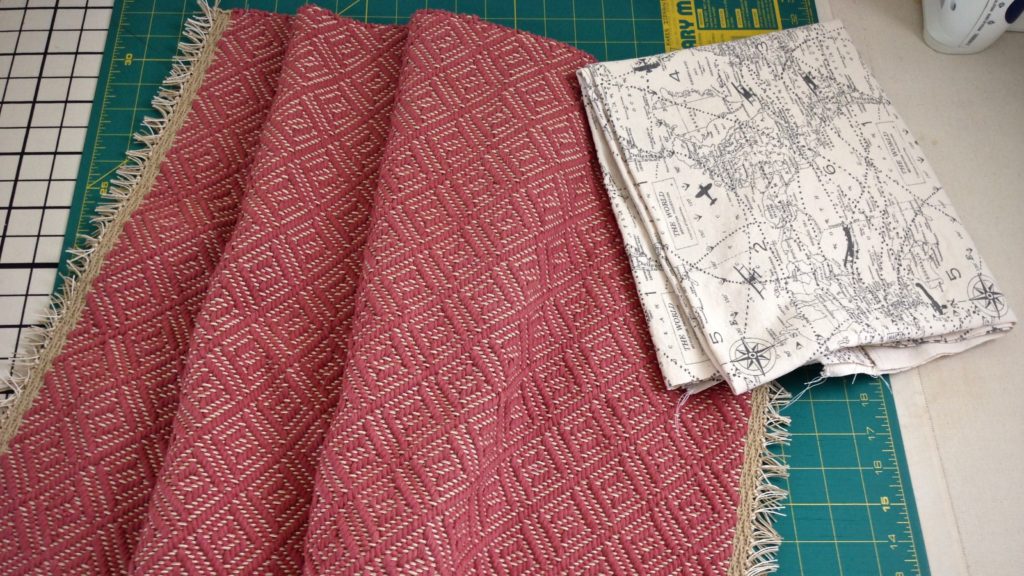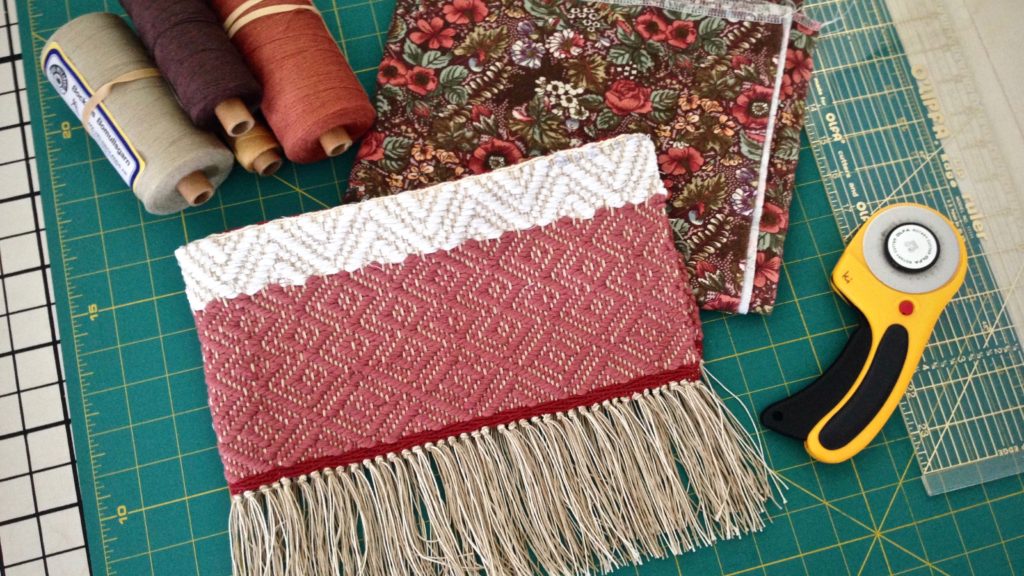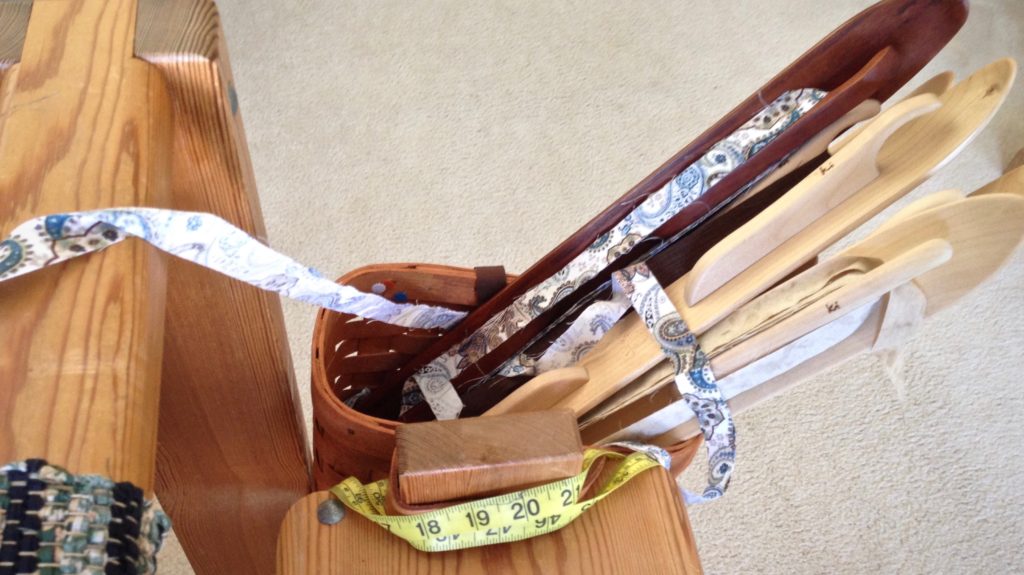The sample piece, a long rug and a short rug with string yarn, and a short rag rug. I look on these results with fondness. A challenge and a joy to weave! The two string yarn rugs will have bound hems when I get a chance to do that. I have world map fabric for the hems. The sample piece and the rag rug piece are destined to become cute bags. I have all the supplies–band loom-woven strap, and yarn to make a band loom-woven strap, lining material, and a handwoven remnant to use as inside pockets. Now, all I need is time. And we all have as much as we need of that.

May you have all the time you need.
All the best to you, my dear friends,
Karen

